Side Tattoo Review
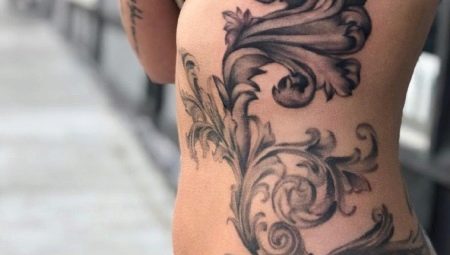
Side tattoos are not trivial, they allow you to realize your imagination. From the material of this article you will learn what are their features, pros, cons, types, styles, colors.
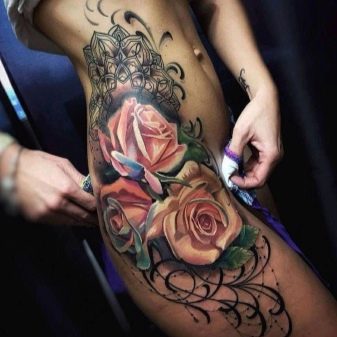
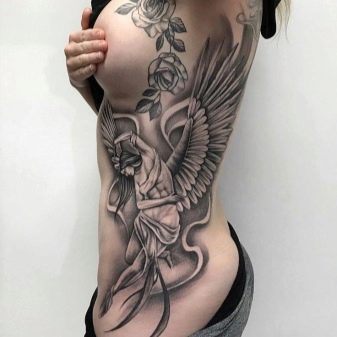
Advantages and disadvantages
The location of the tattoo on the side has a number of advantages:
- they emphasize the slimness of the athletic body;
- visually improve proportions;
- demonstrate uniqueness;
- hide figure flaws.
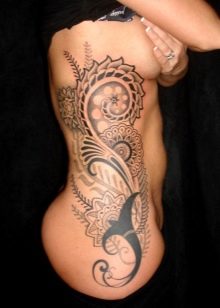
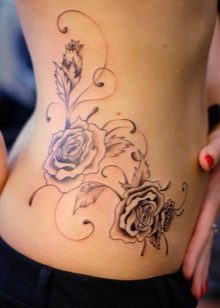
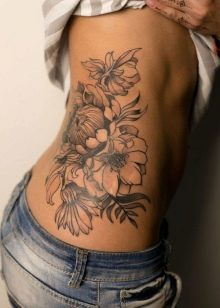
But there are also disadvantages.
- Such tattoos are not suitable for every person. They focus on the hip, lower back, side. To make the picture look aesthetically pleasing, you need to constantly maintain good physical shape.
- In addition, this zone is considered one of the most prone to age-related changes and deformation. It should not be hammered by those who periodically gain weight and lose weight.
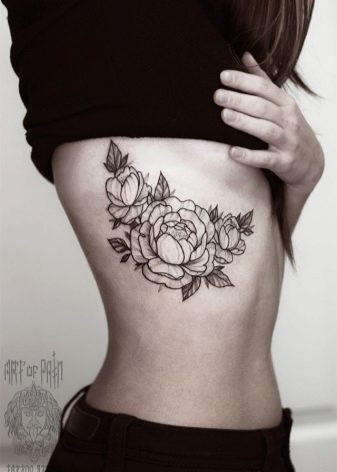
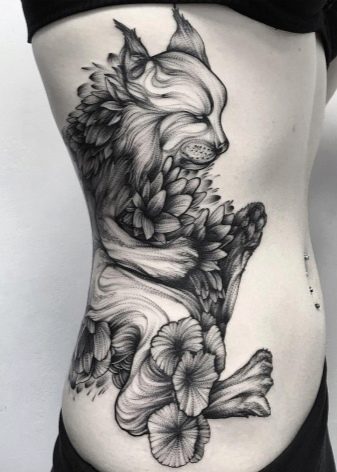
In terms of pain, the side of the body is considered one of the bearable. At the same time, a tattoo for girls is considered intimate and sexy. Often it goes to the lower abdomen, ribs, back.
This zone allows you to fill in full-fledged paintings, subject tattoos of the classic and even costume type.... However, to create an ideal drawing, you need to think over the plot, its artistic content, color rendition, and maintain proportions.
Side tattoo perfectly visible from the front and back... Images should be as thoughtful as possible. Otherwise, the tattoo looks inappropriate and vulgar.
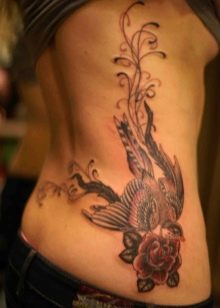

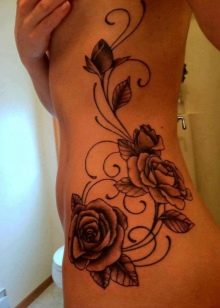
The zone is considered universal, equally well suited for girls and men. At the same time, the nature of the picture often emphasizes the best character traits of the carrier. Tattoos can be exclusively female, male, unisex varieties.
Types and sketches of tattoos
Side tattoos differ in size, shape, theme of the pattern, volume of work, printing density, technique of execution, the presence or absence of a three-dimensional effect.
Depending on the client's choice, the images can be small (miniatures), small (classic versions), large (on the whole side, covering the hips, shoulder blade or sternum, shoulder, forearm).
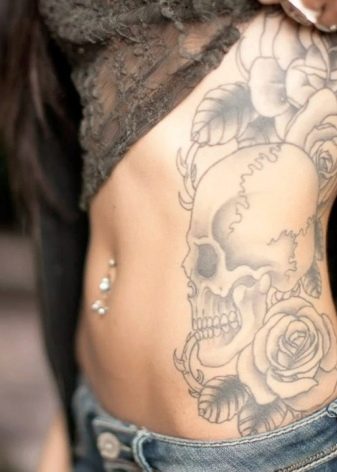
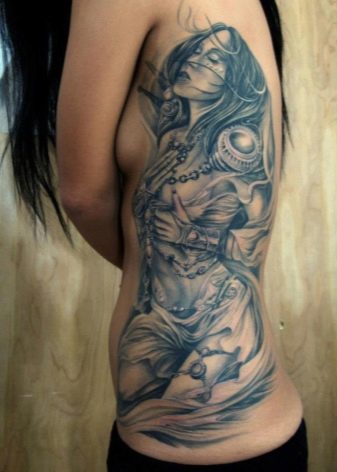
By the type of execution, there are portrait and subject. The first type has a key figure and additional details. A certain picture is captured in the plot images.
At the location, the tattoo is stuffed on the right and left sides. The picture can be located along the side, at a slight slope, passing to the front of the thigh.

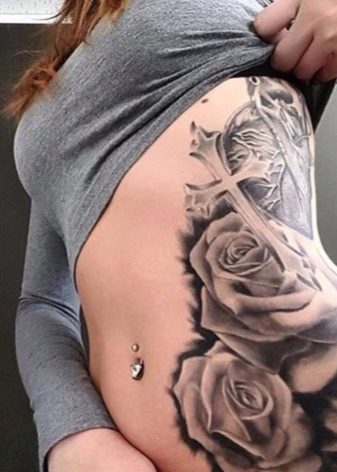
Sketch ideas can be very diverse.
- The best options for girls: mythical dragons, leopards, Asian motives, flowers.
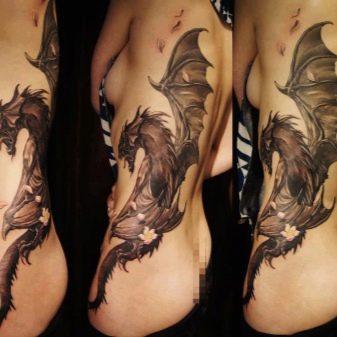

- The clients also like drawings with birds, forest animals, marine life (for example, jellyfish).
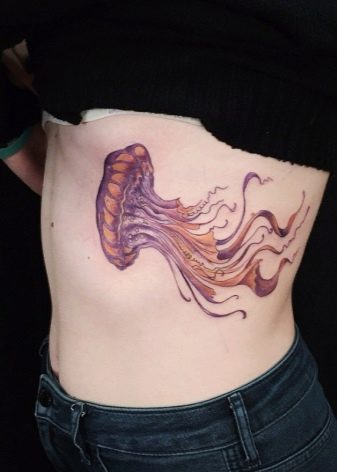
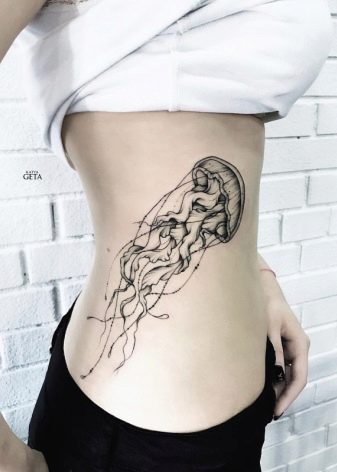
- Popular birds for girls: owls, hummingbirds, peacocks, for men - eagles, griffins. In addition, the Indian theme, the use of patterned elements in the tribal style, female portraits with mythical attributes are relevant.
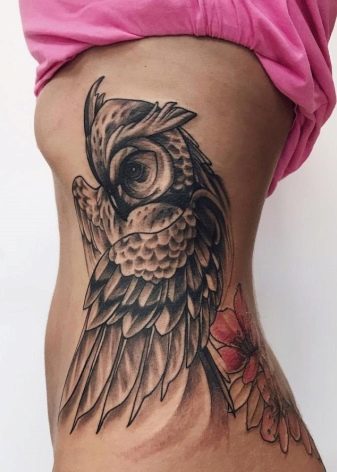

- Extraordinary personalities stuff inscriptions on the side (verses, motivating text), hieroglyphs, large numbers (lettering). Sometimes craftsmen have to put together several techniques. The manner of execution can be classical, modern, antique.
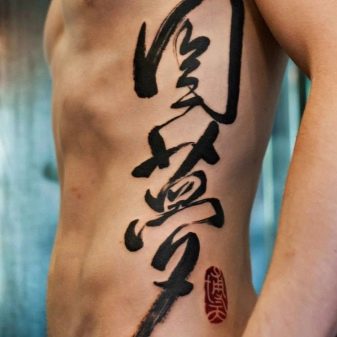
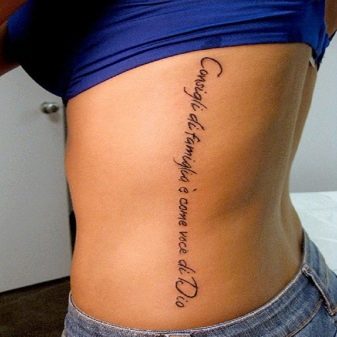
- Men prefer to stuff brutal tattoos on their sides. These can be formidable animals with a bared mouth and sharp claws (wolf, bear, lion, tiger, snow leopard, wolverine).
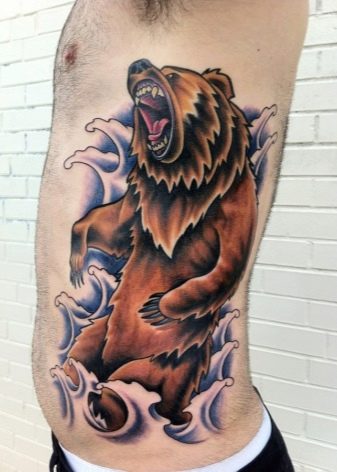
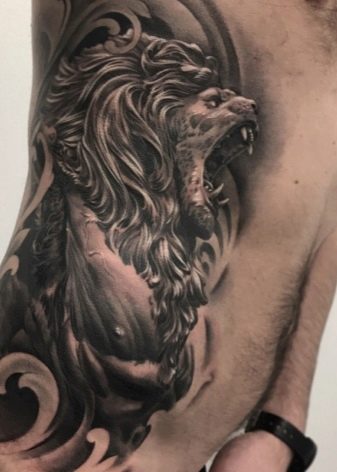
- Drawings in the form of mythical creatures and warriors with shields are popular. In addition, men often get creative tattoos on their sides with skulls, dilapidated skeletons, and birds of prey. Some representatives of the stronger sex decorate the body in a pirate-nautical theme.
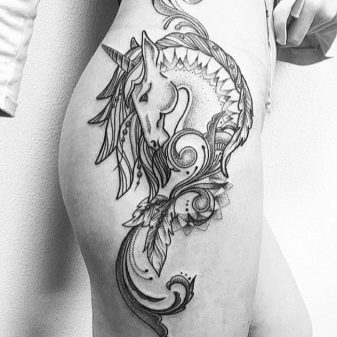
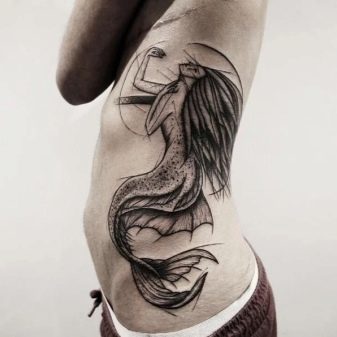
Styles and colors
Color and monochrome tattoos are stuffed on the side. The type of packing can be light and dense. Men most often get black tattoos or colored ones in the style of the old school.
Girls prefer to decorate their bodies with beautiful color images or light black and white drawings that resemble coloring pages. It is fashionable to fill two-tone tattoos with a monochrome base and color (blue, blue, gold, red) accent.
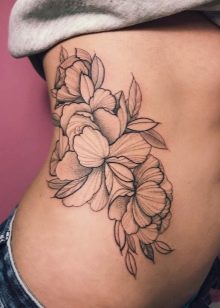
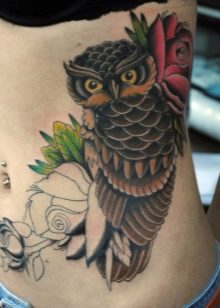

The style of the drawing is different. Popular techniques are as follows:
- tribal (monochromatic symbolic drawings in the form of brutal patterns, symmetrical lines, skulls);
- oriental (brutal color tattoos in the style of oriental flora and organic fauna);
- biomechanics (technique of mixing mechanical parts with torn skin, visual computerization of a person);
- ethnics (drawing of ornaments in an animal style, the use of genuine elements of the drawings of ethnic cultures);
- steampunk (the embodiment of tattoo culture in the style of science fiction, the representation of a person in the form of a biomechanism);
- thrash polka (reflection of the attractiveness of impartial things, denial of banality, glorification of death, decay, fear);
- stetch style (tattoo in the form of sketches, light sketches, stuffed in monochrome, creating "living" pictures);
- realism (photographically clear and accurate embodiment of the pattern on the skin with the drawing of the smallest details);
- watercolor (creating an image in the form of an artistic painting on watercolor paper);
- organic (creative style with elements of abstraction, close to natural, animal motives);
- traditional (the technique of classic printing using bright colors and thick contour strokes).
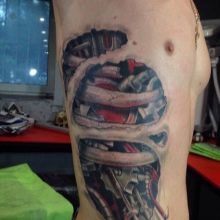
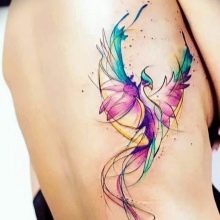
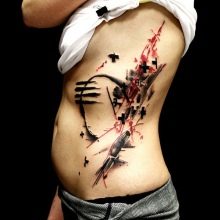
Nuances of application
Tattooing involves damaging the surface layers of the skin for the introduction of pigments. In order to prevent inflammation and wounds, the craftsmen observe the conditions of sterility, and the clients follow the rules of care.
First you need to do a compatibility test... This will eliminate allergies to the stuffing procedure and the dyes used.Before applying, you need to decide on the type of equipment, the amount of work on the body. In addition, the coverage area is selected (from the side, on the whole side, along it).

First, the tattoo artist does the preparatory work. He shaves hair from the selected area. This reduces the likelihood of irritation and infection.
Then the skin is degreased and disinfected. After using the antiseptic, the tattoo artist engages in an imprint of the future tattoo. For this, a drawing on transfer paper and a special gel are used.

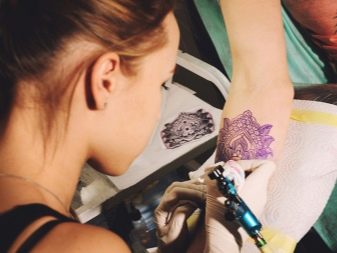
When the sketch is prepared and painted on, the master is engaged in filling the contours. This stage of work is considered the most painful. In the course of work, a machine with needles is used, which quickly immerses the paint under the skin to a depth of 1 cm.
To achieve a high-quality result, first dark ink is driven under the skin and only then - light ink. In the course of work, not only needles are changed, but also pigments. This achieves the desired effect, tone and saturation.
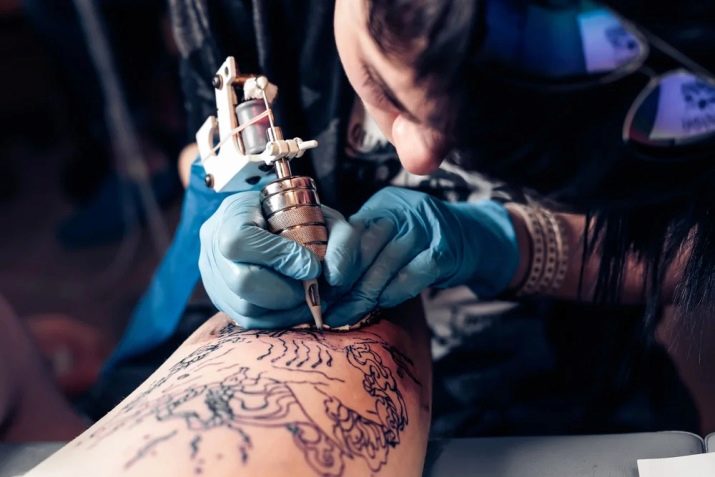
Due to the protruding blood particles, the master constantly dabs the skin. At the end of the session, he applies a healing agent to the surface and covers the tattoo with a protective bandage. Provides the necessary recommendations for fast healing of the skin. The number of sessions varies depending on the complexity of the work, the type of technique chosen, and the desired effect.
The more realistic the image, the more sessions will be needed. Minimalistic drawings take no more than 1 session.









